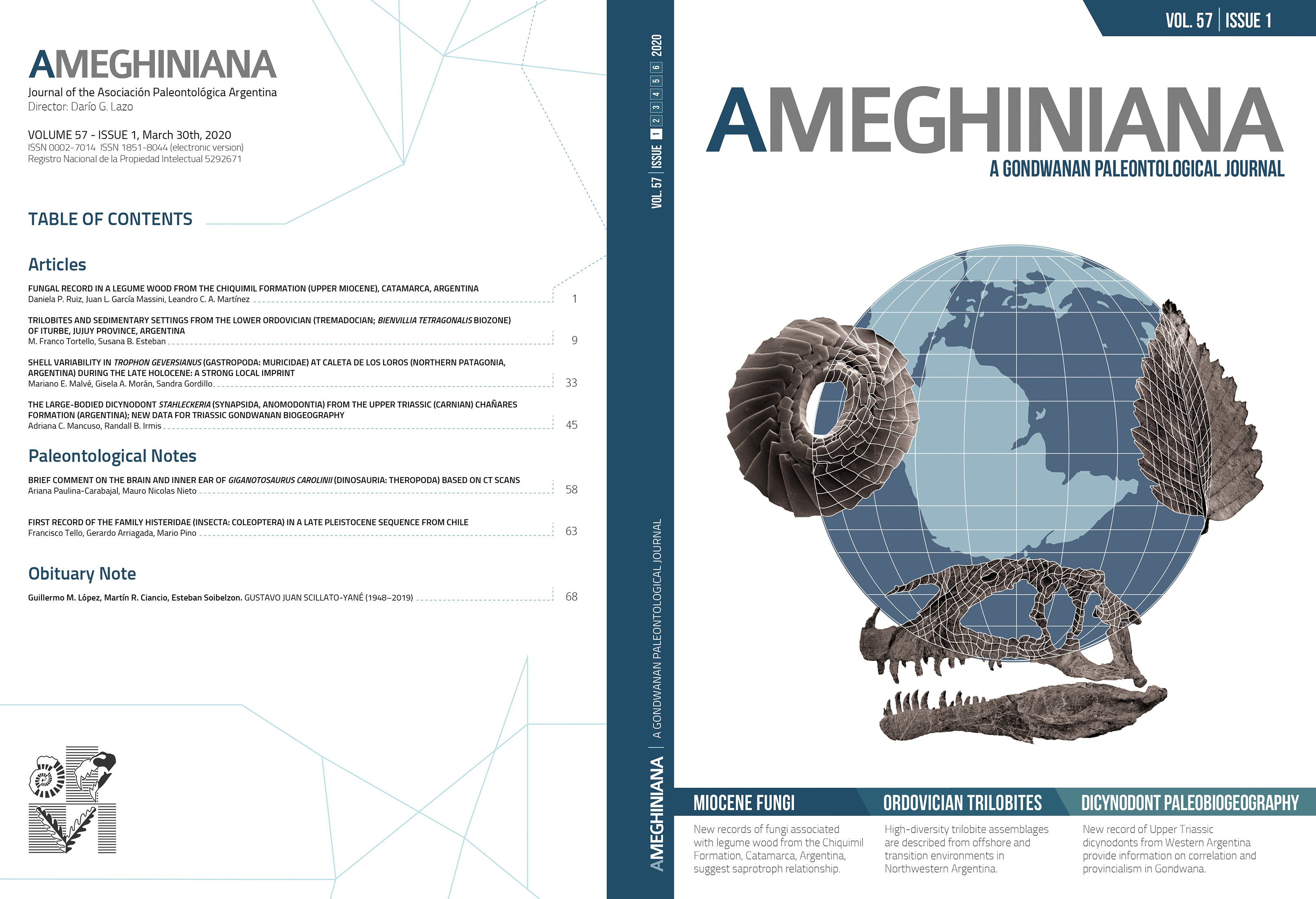SHELL VARIABILITY IN TROPHON GEVERSIANUS (GASTROPODA: MURICIDAE) AT CALETA DE LOS LOROS (NORTHERN PATAGONIA, ARGENTINA) DURING THE LATE HOLOCENE: A STRONG LOCAL IMPRINT
DOI:
https://doi.org/10.5710/AMGH.26.12.2019.3294Keywords:
Death assemblages. Late Holocene. Latitudinal gradient. Outlier site. Patagonia. Gastropod.Abstract
Environmental change, such as variation in upwelling and the consequent fluctuation in marine primary productivity, may have profound effects on organisms. Trophon geversianus shells from Caleta de Los Loros (San Matías Gulf, Northern Patagonia, Argentina) were analyzed in order to compare morphological variability at different spatio-temporal scales. To do so, we performed morphometric analyses at three sites, two fossil deposits of different age from the late Holocene and one modern assemblage. In general, modern shells were thicker than fossil ones. A slight trend of size reduction is also observed over the time considered, since modern shells were, on average, smaller than fossil ones. Size variations of T. geversianus shells are explained on the basis of phenotypic plasticity as a response to the environmental changes recorded in the San Matías Gulf during the Holocene. These changes include variations in paleo-productivity, such as sea surface temperatures, salinities and water circulation changes, which would have modified nutrient availability. Furthermore, Caleta de Los Loros was validated as an outlier site along a latitudinal gradient. Shells from this peculiar place bear a closer resemblance to shells found in sites further south in the Magellan Province. Environmental conditions and oceanographic features related to the presence of upwelling events that were probably responsible for this pattern are discussed.Downloads
Published
Issue
Section
License
Authors publishing in Ameghiniana have the option of making their article freely available online. Authors opting for the Open Access must pay a fee of $300 (US dollars) to cover article-processing costs and to ensure the article is made open access. Please contact the Production Team after the acceptance of your manuscript if you are interested in making your article Open Access. This option implies by default a license Creative Commons Attribution Non-Commercial-NoDerivs License (CC BY NC ND). If your funding institution requires a different licensing option please communicate this to the Production Team after the acceptance of your manusctipt.











